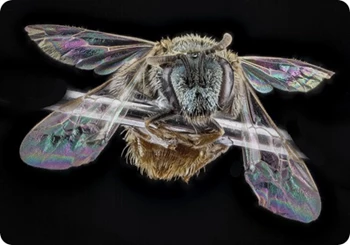 More free practice from the Schizophrenia Spectrum and Other Psychotic Disorders section of the DSM. Answer this:
More free practice from the Schizophrenia Spectrum and Other Psychotic Disorders section of the DSM. Answer this:
A client tells a social worker that her apartment is infested with tiny insects. "They want to change my thoughts," she reports. "They're invisible. Government scientists created them to watch people. A couple of times, I've felt them crawling under my skin." The social worker concludes that there is no insect infestation. What is the MOST likely diagnosis for the client?
A. Schizophrenia
B. Schizoaffective Disorder
C. Delusional Disorder
D. Psychotic Disorder
What's your answer?
Yes, there's not all that much information here, but you still have to give an answer. First thing to do, if you're not sure, is rule out the distractors. Schizoaffective disorder isn't a fit since there's no mention of the presence or absence of mood symptoms. Psychotic disorder can be scratched too, because, like the tiny insects in the client's apartment, it doesn't exist. It's not a DSM diagnosis. If it looks familiar, that may be because brief psychotic disorder is a DSM diagnosis (involving psychotic symptoms present for less than a month).
That leaves schizophrenia and delusional disorder. The client certainly seems to meet criteria for schizophrenia. A schizophrenia diagnosis requires two or more of the following: delusions, hallucinations, disorganized speech, grossly disorganized or catatonic behavior, and/or negative symptoms. (Symptoms have to be present for more than six months, but this stem offers no time frame, so sufficient time has to be assumed.) A diagnosis of delusional disorder requires one or more delusions and the client can't have met criteria of schizophrenia. (Symptoms need to have been present at least one month.)
So which is it?
Take a look at this note--a small caveat--that's part of the delusional disorder diagnosis: "Hallucinations, if present, are not prominent and are related to the delusional theme (e.g., the sensation of being infested with insects associated with delusions of infestation.") Aha! Eureka! That settles it. An answer.
In this case, though the client's sensation of insects crawling beneath her skin is a hallucination. But since it's a hallucination that's directly connected to the client's invisible-thought-changing insect delusion, and has only occurred "a couple of times," the best of the offered diagnoses here is C) Delusional Disorder."
"Aw, come on!" you may be shouting. "How'm I supposed to remember a little note like that?!" You're right. There are lots of little notes scattered through the DSM that you're just not going to be able to memorize and that you shouldn't even try to memorize. But this little note about how hallucinations can sometimes fit within delusional disorder, you don't have to remember it. Now you know it!
***
To get complete practice tests covering the DSM and lots more, create an account!

 More free practice from the Schizophrenia Spectrum and Other Psychotic Disorders section of the DSM. Answer this:
More free practice from the Schizophrenia Spectrum and Other Psychotic Disorders section of the DSM. Answer this: